Client: Bank of Kigali, Rwanda
Project: A USSD based e-wallet for farmers to allow mobile payments for subsidised agricultural products & to give access to the banking ecosystem
Context: More than 80% of the country earns directly or indirectly through the agriculture sector. Lack of formal lines of credit is a challenge that must be overcome to uplift communities and meet the country’s development goals to improve income and standard of living. By introducing USSD based digital wallets that target everyone in the agriculture ecosystem, Bank of Kigali will be able to assess each user’s creditworthiness and offer lines of credit to Rwandan farmers within 2 years.
The ecosystem we designed for:

We mapped the ecosystem of players involved in a typical farmer’s life, and focused the MVP on their interactions with their suppliers, intermediaries, and their fellow farmers. This was done to leverage the existing network of payments and trust instead of having to build new ones when we introduce our product to the market.
The Team:
I was the Lead designer on a 10 member product squad set up in the newly created Digital Factory at Bank of Kigali. The team had members from Germany, India, Kenya, South Africa, UAE, Uganda, USA, and of course, Rwanda.
Crafting the Elevator Pitch and working on the Lean business model canvas:

During the initial days of the project, we spent time with the client to craft the elevator pitch for the product and help bring razor focus on the work we were doing. These workshops were guided by experts from McKinsey Digital labs and I was able to level up my own workshopping skills during this time.
The research we did:
The product squads worked on a 2-week sprint, and regular testing was part of the culture we established at the digital factory. I personally planned and executed research and testing activities at multiple times during the project. Here are some highlights:
- Ecosystem mapping using lego bricks allowed the farmers to communicate in their own language and allow the non-local language speakers to understand the basic layout of the ecosystem without having to wait for translations. It also provided a more engaging non-linear approach to discovery conversations and uncovered previously unknown dependencies in the farmer’s life.

- Contextual inquiries with agro-dealers at their shops allowed us to understand the agro dealer’s practices, methods of dealing with customers and pain points as well as the implications of the environment they work in.

- In person moderated usability testing with digital prototypes let the farmers provide feedback on the latest version of the design as soon as it was designed. It also gave us insights into how they typically handle and interact with a feature phone vs with a smart phone that provided input for better designs going forward.

Advanced prototypes to simulate USSD in Kinyarwanda:
Designing for USSD came with the challenge of how to prototype the interactions in a convincing way to get accurate feedback from the study participants. After weighing various options, I eventually settled on recreating a feature phone interface in Sketch, and replacing the English text with the Kinyarwanda text using a sketch plugin that synced with a google sheets file that contained our translations. Switching between english and Kinyarwanda instantaneous and sped up the overall time to deliver the user journeys in both languages.

Recruitment and training of local designers
At the Digital Factory, I also hired and trained local designers to become the bank’s own design team to continue building the products after we had rolled off the project. As part of the their mentorship and training, I taught the designers about basics of UX design principles for modern product companies, and designing in an Agile project environment. I also helped them organise Rwanda’s first UX design meet-up that has now grown to a large community of more than 300 designers from Rwanda and neighbouring countries.
Establishing design culture at the Digital Factory
At the Digital Factory, I actively helped organise activities such as weekly Lunch and Learns, and Show-and-Tell for recent work that helped build a healthy work culture. I also organised a monthly board games evening session for colleagues from various departments to spend time with each other outside of a work context.
Key learnings:





